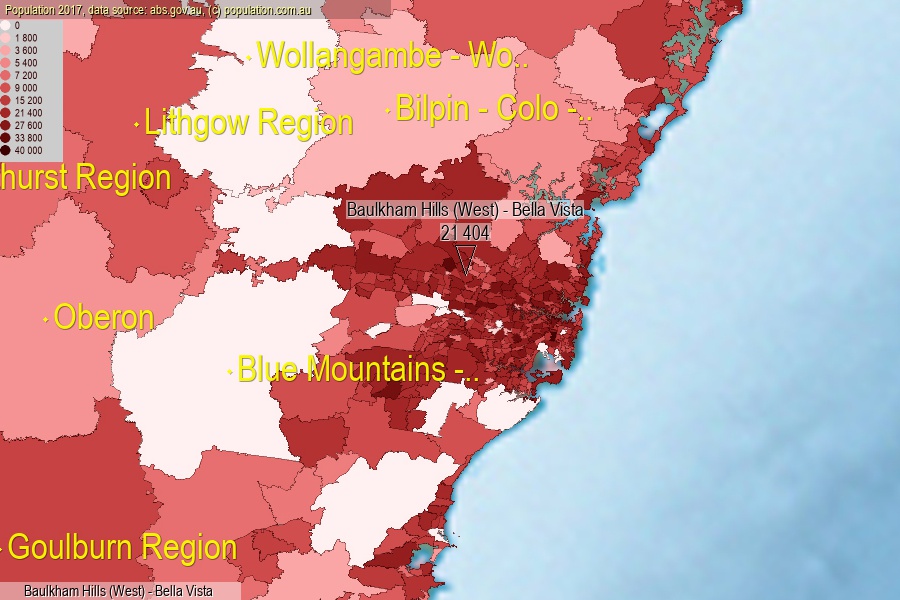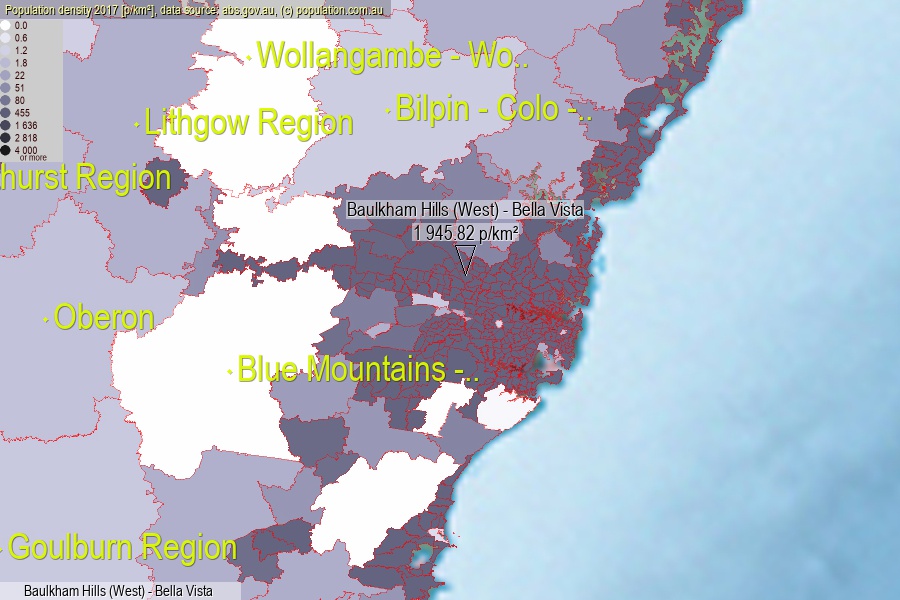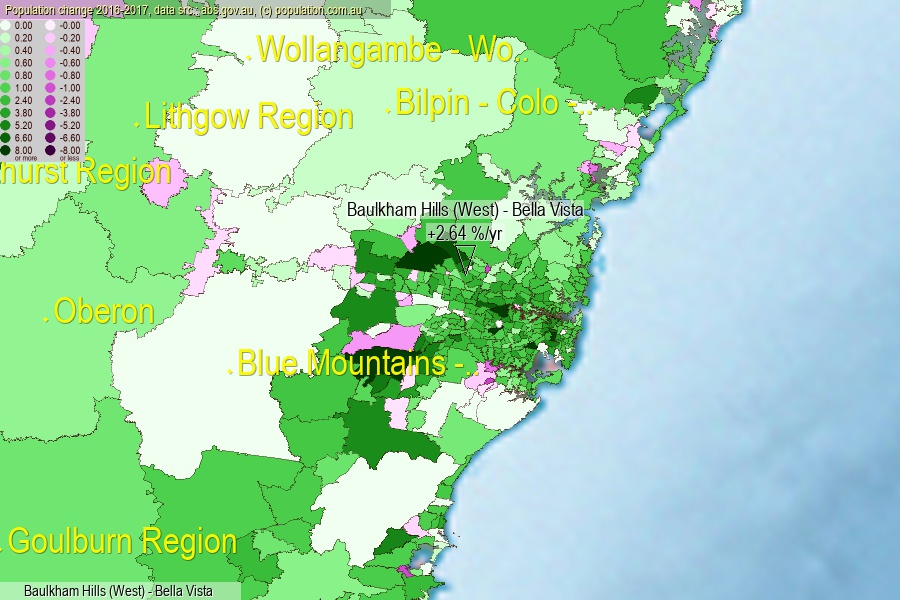 population.com.au
population.com.auLast official estimated population of Baulkham Hills (West) - Bella Vista (as Statistical Area Level 2) was 21 404 people (on 2017-06-30)[2]. This was 0.09% of total Australian population and 0.269% of NSW population. Area of Baulkham Hills (West) - Bella Vista is 11.00 km², in this year population density was 1 945.82 p/km² . If population growth rate would be same as in period 2016-2017 (+2.64%/yr), Baulkham Hills (West) - Bella Vista population in 2025 would be 26 370. [0]



Click to enlarge. Baulkham Hills (West) - Bella Vista is located in the center of the images.
Population [people], population density [p./km²] and population change [%/year] [2]
View borders » (new window) [4]
[1991-1992] +1.78 %/Yr.
[1992-1993] +2.55 %/Yr.
[1993-1994] +2.41 %/Yr.
[1994-1995] +5.44 %/Yr.
[1995-1996] +4.49 %/Yr.
[1996-1997] +4.93 %/Yr.
[1997-1998] +5.23 %/Yr.
[1998-1999] +2.68 %/Yr.
[1999-2000] +0.57 %/Yr.
[2000-2001] +2.70 %/Yr.
[2001-2002] +0.48 %/Yr.
[2002-2003] +2.42 %/Yr.
[2003-2004] +2.67 %/Yr.
[2004-2005] +1.03 %/Yr.
[2005-2006] +0.98 %/Yr.
[2006-2007] +0.33 %/Yr.
[2007-2008] +2.10 %/Yr.
[2008-2009] +2.62 %/Yr.
[2009-2010] +1.27 %/Yr.
[2010-2011] +0.93 %/Yr.
[2011-2012] +1.03 %/Yr.
[2012-2013] +1.08 %/Yr.
[2013-2014] +1.38 %/Yr.
[2014-2015] +1.88 %/Yr.
[2015-2016] +1.45 %/Yr.
[2016-2017] +2.64 %/Yr.
[0] Calculated with linear interpolation from officially estimated population
[1] Read more about SA2 and Australian Statistical Geography Standard (ASGS) on abs.gov.au
[2] Population data from Australian Bureau of Statistics (Population and density: 2017; change: 2016-2017)
[3] Digital Boundaries: Australian Statistical Geography Standard (ASGS) 2016.
[4] Border coordinates are simplifyed using Ramer-Douglas-Peucker algorithm.